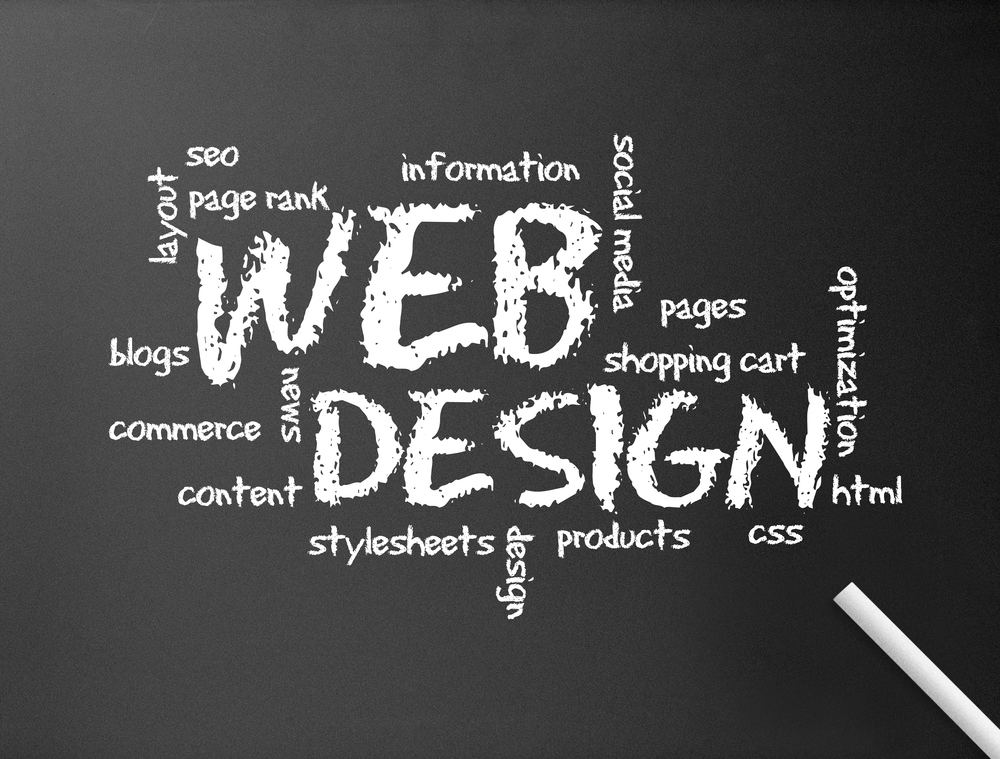
Questions You Must Ask When Developing A Website

Aside from actual on-page optimization and linking efforts, there is nothing that impacts a site’s performance more than the development and design.
In fact, a site with excellent on-page optimization and strong linking will always suffer under a poorly coded site architecture and/or design.
All too often, businesses come to us after the site has already been designed and coded. We then charge the client hundreds, if not thousands of dollars, to make the site search engine friendly. Only then can we start optimizing, promoting and marketing the site.
The problem here is that making the site search engine friendly shouldn’t be done after the site is designed; it should be done while the site is being designed. It’s the developer’s job. They are coding the damn thing, so for the love of HTML (and all other web programming languages), do it right!
While I don’t have any degree in website design and I in no way call myself a programmer, web marketing has taught me a great deal about designing websites. I think many web designers start with the goal of making the site pretty, or making sure it functions as requested. But what they often don’t consider is what happens next. They did their job, the rest is someone else’s problem.
Marketing Comes First
Unfortunately, this type of design is shortsighted. All design should start with marketing. It’s marketing that determines what looks good visually. It’s marketing that determines the layout of the site. It’s marketing that constructs effective navigation layouts. It’s marketing that ensures the design adheres to best usability practices or considers the audience’s needs and requirements. It’s marketing that then takes that site and turns it into a revenue generator for the business
Sorry, developers. Marketing comes first and foremost; the rest is built from that!
In light of that, we have created a list of questions (over 100!) that we use to determine the scope of any new web development project. By thinking through these answers early, scope creep is kept to a minimum and ensures that the client’s final product is exactly what they want.
These questions allow us to:
- get a good understanding of the business, who their audience is and what the client is looking for;
- produce a quote that is as accurate as possible to the client’s needs and produce a website that meets their expectations; and
- build a site that is ready to be marketed online, staying true to the business’s core principles and vision.
100+ Questions Every Web Developer Should Ask Before They Provide A Web Design Quote
The questions below are listed under Background Information and Scope & Specs.
Background Information
- Describe your target audience.
- What is the purpose of the website?
- What are your corporate core values and how do you express them to your visitors?
- What makes you different from your competitors?
- Why should people do business with you rather than your competitors?
- Describe the style of the website you want.
- Do you have specific company colors that need to be used?
- Can you provide the Pantone numbers for your company colors?
- Do you have any other materials that the site needs to match with in some way (brochures, press materials, etc.)?
- What do you like most about your current website?
- Is there any functionality or options on your current website that you plan to keep (other than the content)?
- What are your top 3 frustrations with your current website?
- What do your current competitors’ websites have that you wish to have?
- Are there any websites with designs that you like?
- What about those websites would you like to be incorporated into your website?
- What types of things do you see on other websites that you really like?
- What types of things do you see on other websites that you really hate?
- Name the 3 things that are most important in the design of your new website.
- Name the 3 things that are least important in the design of your new website.
- Where is your website hosted?
- Do you have full access?
- Can you provide usernames and passwords?
- Who will be involved on your end in the development of the website?
- Any other contractors?
- Who or how will you be managing website upkeep?
- Do you have a budget you are trying to meet?
Scope & Specs
- Does your current web host meet all your new website’s needs (space, bandwidth, databases, etc.)?
- Do you plan on or need to move to a new host provider?
- Do you need help finding the right web host?
- Do you already have a URL you plan to use?
- If not, do you need help selecting and registering a good URL?
- Do you have a logo you plan to use or will one need to be created?
- If you have one, can you provide the original artwork files?
- Will you need a favicon created?
- Do you have a tagline you wish to use or do you need help creating one for your site?
- Do you have a completed site architecture for the new website or will this be part of the scope of work?
- How many pages will the finished website be (estimated)?
- Do you have any page wireframes ready or will those need to be produced as part of the scope of work?
- Do you have the content for the website or will content creation be a part of the scope of work?
- How many pages of content will need to be developed?
- Will there be any cross promotion of content within the site?
- Please provide details on content cross promotion.
- Will we be importing and formatting your content, or do you plan to do this?
- Do you or your team need training for making website updates, content publishing guidelines, etc.?
- What types of actions do you want your visitors to take on your website?
- Do you have any specific photos you plan to use?
- Do you have full rights to those files?
- Can you provide hi-res files to us?
- Will we need to find and/or create any images for the website?
- Will video or audio be a part of the new website?
- Can you provide us the proper files or is creation of this content part of the scope of work?
- How many videos or audio files will be added and/or created?
- Will any customizations need to be made such as optimizing for search, adding content overlays, customized wrappers, etc?
- Do you require online chat features?
- Do you have any other media or PDF documents that need to be incorporated, or will any need to be created?
- Will these need to be optimized for search?
- Will your visitors require any special needs (i.e., screen reader ready, larger fonts)?
- Do you require your site to be mobile friendly (responsive design)?
- Do you have any specific mobile requirements?
- Do you need multi-language support?
- Will you need a shopping cart system for e-commerce?
- Do you have a system you already use?
- Are you in need of an upgrade?
- Do you need a content management system?
- Do you have a preference for which CMS to use? (i.e., WordPress, Joomla, Drupal, Concrete 5, Magento, etc.)
- If not, do you need help selecting the best CMS for your needs?
- Will you need multiple levels of access?
- Do you need to be able to manage content publishing approval processes?
- Does your site need a blog or a forum?
- Will users need to log in to your site for any reason?
- If so, why?
- Do you need any password protected areas?
- What kind of content will be put behind password protected areas?
- How many web forms does your new site need?
- What is the purpose of each?
- How do you want the submitted info handled? (email, database, etc.)
- Do you need any social sharing features built in (tweet, like, +1, share, etc.)?
- Will there be any third-party applications that will need to be integrated?
- What are they?
- Will you need an events calendar feature?
- Do you have any subscription services?
- Do you use a third party for any part of subscription content delivery and/or payment?
- Do you require printer friendly options?
- Do you wish to employ any “content-on-demand” features (i.e., hidden elements that are made visible with certain actions)?
- Do you want a fixed-width or fluid-width design?
- What information must be on the home page?
- What information must always be visible?
- What features, sections or information do you want emphasized on the site?
- How would you like that to be featured?
- Will different sections of your site require different designs, layouts or coloring?
- Do you have any flash elements you want included?
- Will those be provided or do they need to be created?
- Do you need an internal site search feature?
- Do you want contact phone numbers prominently displayed?
- Do you require a database?
- What specific functionality will it need?
- Will you be offering advertising on the site?
- How should that be implemented?
- Do you have a Google Analytics account?
- Can you provide us access?
- Do you have any other specifications or need specific functionality that has not been addressed?
- What is your time frame for total project completion?
- Will you be looking for keyword optimization beyond the design/development scope?
Avoid The Cost Of Scope Creep And Post-Development Fixes
The worst development jobs are those that end up with runaway scope creep. That happens when the client doesn’t really know what they want and they keep adding to the project as it moves forward.
The cost of this creep is often saddled on the developer because the scope was never clearly defined in the first place. When your developer poses these questions up front, it helps the client carefully think through all of the things they need in advance, eliminating scope creep almost entirely. And, because marketing is baked right into the development process, there’s no need to hire a whole new agency to “fix” all the marketing-related blunders perpetrated by the original designer.

